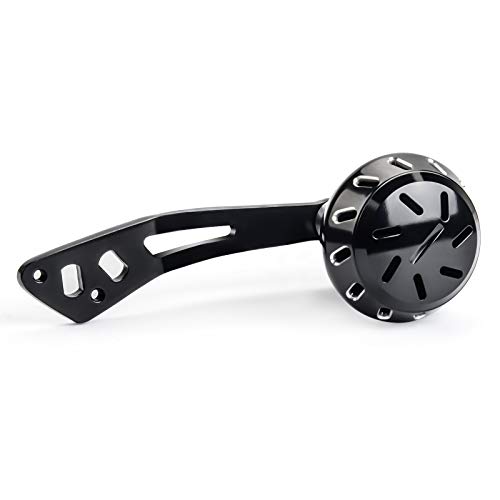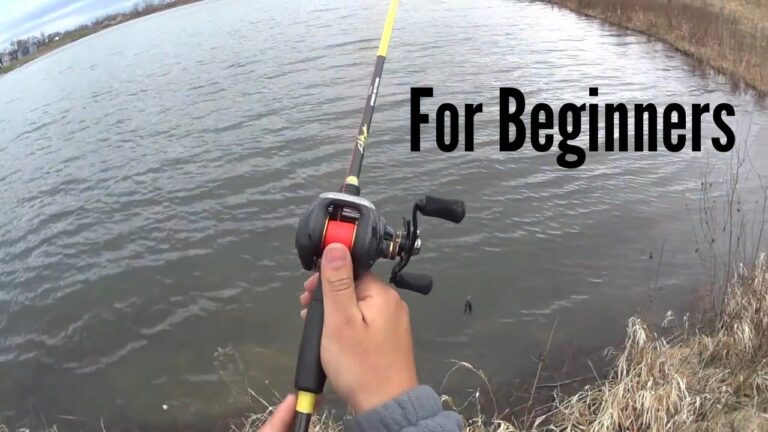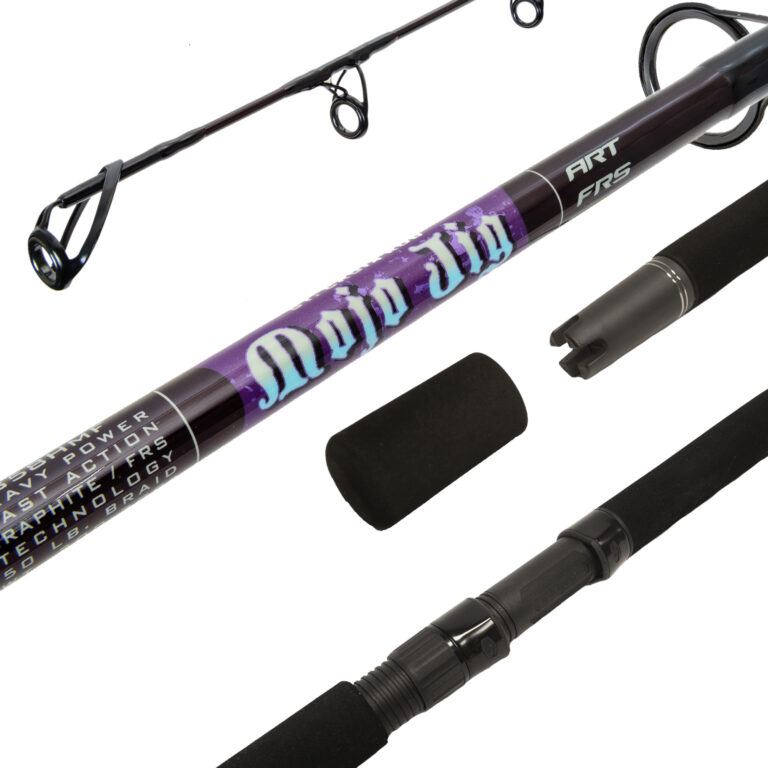A baitcaster typically holds around 100 to 150 yards of fishing line. Baitcasters are popular among anglers for their ability to cast heavy lures and handle larger fish.
Fishing enthusiasts often opt for a baitcaster reel due to its capability to cast heavy lures and tackle bigger fish. However, it is crucial to know how much line a baitcaster can hold to ensure a successful fishing experience. We will explore the line capacity of a baitcaster and provide you with essential information to make informed decisions while on your fishing expedition.
By understanding the line capacity of a baitcaster, you can determine how much fishing line is suitable for your specific needs and maximize your chances of catching that prized fish. So, let’s dive into the details of how much line a baitcaster can hold and how it impacts your angling adventures.

Credit: www.youtube.com
Understanding Baitcasters And Line Capacity
Baitcasters are popular fishing reels that offer precise casting control and increased accuracy. Unlike other reels, such as spinning reels, baitcasters have a unique design that requires anglers to spool the line correctly. Understanding how much line a baitcaster can hold is crucial for a successful fishing experience.
Here’s what you need to know:
What Is A Baitcaster And How Does It Differ From Other Fishing Reels?
A baitcaster, also known as a baitcasting reel, is a type of fishing reel that sits on top of the fishing rod. Unlike spinning reels, which have a fixed spool, baitcasters have a revolving spool that rotates during casting. This design allows for greater casting accuracy and control.
Here are some key points about baitcasters:
- Baitcasters are versatile reels that are suitable for various fishing techniques, including casting lures, flipping, and pitching.
- Unlike spinning reels, which are best for light to medium-sized fish, baitcasters are capable of handling larger and heavier fish species.
- Baitcasters require a bit of skill and practice to master, as they have a learning curve when it comes to casting and controlling the spool.
Factors To Consider When Determining Line Capacity In A Baitcaster
When it comes to line capacity in a baitcaster, several factors should be taken into consideration. Here are the key points to keep in mind:
- The size and weight of the fishing line play a crucial role in determining the line capacity of a baitcaster. Thicker and heavier lines will take up more space on the spool, reducing the overall line capacity.
- The target species also affects line capacity. If you’re targeting larger fish that are known to take long runs, you’ll need a baitcaster with a greater line capacity to accommodate the extra line required.
- Fishing conditions, such as deep water or heavy cover, may also affect the line capacity needed. In these situations, anglers often opt for baitcasters with larger line capacities to ensure they have enough line to handle any unexpected obstacles.
- It’s important to note that while baitcasters can hold a significant amount of line, overfilling the spool can lead to issues such as backlash and reduced casting distance. It’s crucial to strike a balance and not overload the reel with excessive line.
The Importance Of Matching Line Capacity To The Target Species And Fishing Conditions
Matching the line capacity of your baitcaster to the target species and fishing conditions is crucial for a successful angling experience. Here’s why it matters:
- Using a baitcaster with insufficient line capacity can lead to frustration and missed opportunities. If a fish takes a long run and you run out of line, you risk losing the fish.
- On the other hand, using a baitcaster with excessive line capacity can result in unnecessary bulk and reduced casting performance. It’s essential to find the right balance to ensure optimum performance.
- Considering the target species and fishing conditions will help you determine the appropriate line capacity needed. By doing so, you can ensure you have enough line to handle any situation that arises.
Remember, having the right line capacity in your baitcaster is just as important as using the right technique and selecting the proper tackle. Take the time to evaluate your fishing needs and choose a baitcaster that meets those requirements. With the right line capacity, you’ll be well-equipped to tackle any fishing challenge that comes your way.
Calculating Line Capacity For Baitcasters
Baitcasters are popular among anglers due to their casting accuracy and overall versatility. One important factor to consider when using a baitcaster is how much line it can hold. Properly understanding line capacity for your baitcaster will ensure that you have enough line for your fishing needs.
In this section, we will explore different factors that affect line capacity and provide tips for maximizing it.
The Formula For Determining Line Capacity In Your Baitcaster
Determining the line capacity of your baitcaster involves a simple formula: line capacity (in yards) = spool diameter (in inches) x spool width (in inches) x 0. 013. This formula gives you an approximate line capacity that you can expect from your baitcaster.
It’s important to note that baitcasters may have different spool designs, so the calculated line capacity may vary slightly.
Here are the key points to keep in mind when using this formula:
- Measure the spool diameter by running a soft measuring tape across the inside of the spool.
- Measure the spool width by running a soft measuring tape from one side of the spool to the other.
- Multiply the spool diameter by the spool width, and then multiply the result by 0.013 to get the approximate line capacity in yards.
Understanding Line Diameter And Its Impact On Line Capacity
Line diameter plays a crucial role in determining the line capacity of a baitcaster. Thicker lines take up more space on the spool, resulting in reduced line capacity. Conversely, thinner lines provide increased line capacity.
Consider the following points when it comes to line diameter:
- Thicker lines, such as 20lb test, will reduce the maximum line capacity of your baitcaster compared to using thinner lines like 10lb test.
- The impact of line diameter on line capacity is especially important to consider when targeting larger fish that may require heavier lines.
- Some anglers prefer to use thinner lines to maximize line capacity, but it’s essential to balance line diameter with the target fish’s size and strength.
Considering The Recommended Line Capacity Provided By The Manufacturer
Most baitcaster manufacturers provide recommended line capacity information for their reels. These recommendations are based on extensive testing and help you choose the appropriate line for your baitcaster.
Here’s what you need to know when considering the manufacturer’s recommended line capacity:
- The recommended line capacity takes into account the reel’s design, spool dimensions, and overall performance.
- Choosing a line within the manufacturer’s recommended range ensures optimal reel performance and reduces the risk of line tangles, backlash, or other issues.
- It’s important to follow the manufacturer’s suggestions to maintain the integrity of your baitcaster and maximize its lifespan.
Tips For Maximizing Line Capacity
To make the most of your baitcaster’s line capacity, consider the following tips:
- Use a thinner line: Opting for a thinner line can increase your baitcaster’s line capacity without compromising too much on strength.
- Avoid overfilling the spool: While it may be tempting to fill the spool to its maximum capacity, leaving a small gap between the line and the spool’s edge will prevent tangles and backlash.
- Consider your fishing style: If you primarily engage in long-distance casting or deep-water fishing, you may want to prioritize line capacity to accommodate for the extra line required.
- Regularly check the line: Inspect the line for any signs of wear or damage, and replace it when necessary. Damaged line can take up unnecessary space on the spool.
By considering these factors, you can ensure that your baitcaster has the optimal line capacity for your fishing adventures.
Factors That Influence Line Capacity
The Role Of Spool Size In Determining Line Capacity
The size of the spool on a baitcaster reel plays a significant role in determining the line capacity. Here are the key points to understand:
- Spool size refers to the diameter and depth of the spool. A bigger spool generally allows for more line to be held.
- The line capacity of a baitcaster can vary significantly depending on the spool size. Smaller spools typically hold less line, while larger spools can accommodate more line.
- It’s important to note that the line diameter also affects the line capacity. Thicker lines will take up more space on the spool, resulting in reduced overall line capacity.
- When choosing a baitcaster reel, consider your fishing needs and preferences. If you plan on fishing in situations that require a longer line, opting for a reel with a larger spool size would be beneficial.
How Different Fishing Techniques And Lures Can Affect Line Usage
The fishing technique and lure selection can impact how much line is used during a fishing trip. Here are the key points to consider:
- Certain fishing techniques, such as trolling or deep-sea fishing, may require the use of heavier lines. These lines have a larger diameter and will take up more space on the spool, reducing the overall line capacity. Conversely, finesse fishing techniques that involve light lines will allow for greater line capacity on the spool.
- The type of lure being used can also affect line usage. Lures with treble hooks or sharp edges can sometimes cause friction and lead to line breakage. This can result in the need for frequent line replacements, reducing the effective line capacity.
- Additionally, techniques that involve casting or retrieving over long distances may require the use of more line on the spool. It’s important to consider this when adjusting the line capacity for specific fishing scenarios.
Understanding The Trade-Offs Between Increased Line Capacity And Casting Performance
Increasing the line capacity on a baitcaster reel can have trade-offs when it comes to casting performance. Here are the key points to understand:
- As the amount of line on the spool increases, the overall weight of the reel also increases. This added weight can affect casting distance and accuracy.
- When casting, a larger amount of line on the spool creates more friction as it leaves the reel, potentially reducing the casting distance.
- On the other hand, reducing the line capacity can improve casting performance as it decreases the weight and friction during casting.
- It’s essential to strike a balance between line capacity and casting performance based on your fishing needs and the fishing environment.
How To Adjust Line Capacity For Specific Fishing Scenarios And Preferences
Adjusting the line capacity on a baitcaster reel to match specific fishing scenarios and preferences can enhance your fishing experience. Here are the key points to consider:
- Before adjusting the line capacity, evaluate the fishing conditions, such as water depth, target species, and fishing technique.
- For scenarios that require longer lines, consider opting for a reel with a larger spool size to accommodate the needed line capacity.
- If finesse fishing or using light lines, prioritize a smaller spool size to maximize the line capacity.
- Keep in mind the trade-offs between line capacity and casting performance and find the right balance that suits your preferences and fishing requirements.
- Regularly check the line on the spool to ensure it is in good condition, and replace worn-out or damaged line promptly.
Remember, understanding the factors that influence line capacity on a baitcaster reel can greatly enhance your fishing experience. By adjusting the line capacity accordingly for specific fishing scenarios and preferences, you can optimize your chances of success on the water.
So go ahead, reel in those big catches with confidence!
Conclusion
To sum up, understanding how much line a baitcaster can hold is crucial for successful fishing. While there is no one-size-fits-all answer, factors such as the type of fishing, target species, and personal preference should be considered. A general rule of thumb is to fill the spool up to about 80% capacity to prevent backlashes and improve casting distance.
However, it’s essential to remember that using heavy lines might decrease the overall line capacity of the baitcaster. Additionally, experimenting with different line types and weights can help determine the ideal line capacity for specific fishing situations. By finding the right balance, anglers can maximize their chances of landing that trophy catch while enjoying a seamless fishing experience.
So, the next time you hit the water with your baitcaster, consider the factors discussed in this guide to determine the appropriate amount of line to load onto your spool. Happy fishing!




